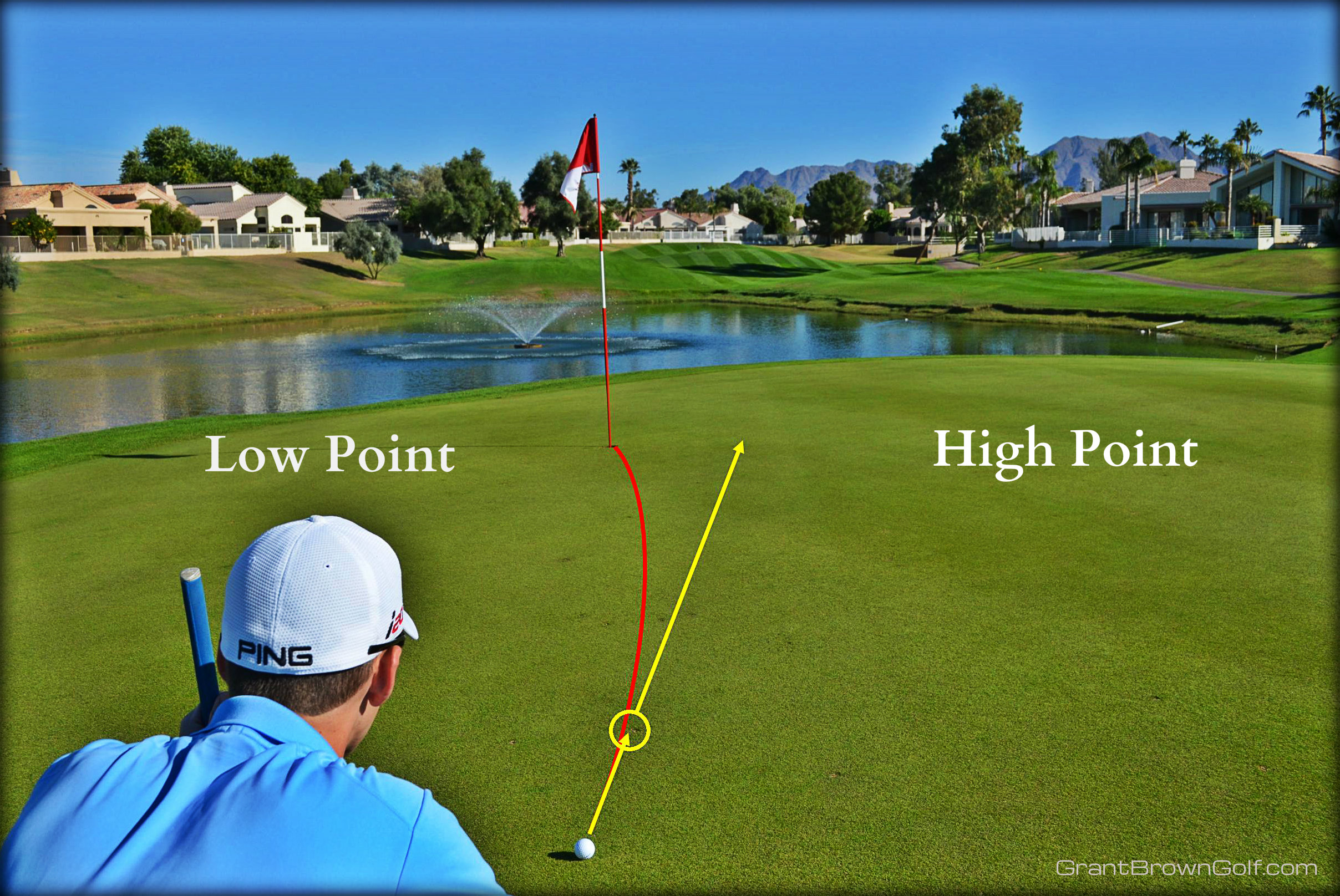-
Putting: How to correctly read and aim your putts
Little known (or thought about) fact:
Reading how your putt will break and aiming your putter face correctly is just as important as making a good stroke.
1.) Find the lowest point of the green: This is the key to correctly reading a putt.
Usually there are 3 or 4 quadrants on an individual green. Each quadrant will have a low place for the water to run off the green. If you can figure out how the water drains off the green then you can figure out how your putt is going to break: Both running water and rolling golf balls obey the law of gravity.
If you are having trouble seeing the break, walk along beside the line of your putt. You will be able to feel the slope with your feet. I trust what I feel when I’m walking along the line more than what I see from behind the ball.
One other green reading tip: The course architect will design low places to funnel water away from sand traps, so usually your putts will break away from green side bunkers.
2.) Pick an intermediate target: This is the key to aiming correctly.
If you try to aim your putter at a target that is 20 feet away, the chances that you will aim correctly are slim to none. I like to aim my putter at an intermediate target that is only a couple feet from my ball. This way, when I look at the ball, I can see my intermediate target with my peripheral vision.
In the picture above, I am looking down the target line and aiming to start my ball rolling over the left edge of an old ball mark. Once I address the ball, my first step is to aim the putter at my intermediate target. Then I look at the distance to the hole, get the feel for the speed and let it roll!
If this helped your game, I would love to know about it in the comments section below.
Thanks for reading!
GB







Dear Grant,
I sure enjoy your blogs. I like your forearm rotation drill. I can see, by doing the drill, that I don’t rotate enough. I’ll work on that.
How’s your shoulder?
All My Best,
Mike
Hi Mike, Thanks for the comment. Forearm rotation is one of my favorite things to work on. My shoulder doesn’t seem to be getting better yet but I have a plan of action, so I am feeling good about it.